.jpg)
1995 - 911 RS
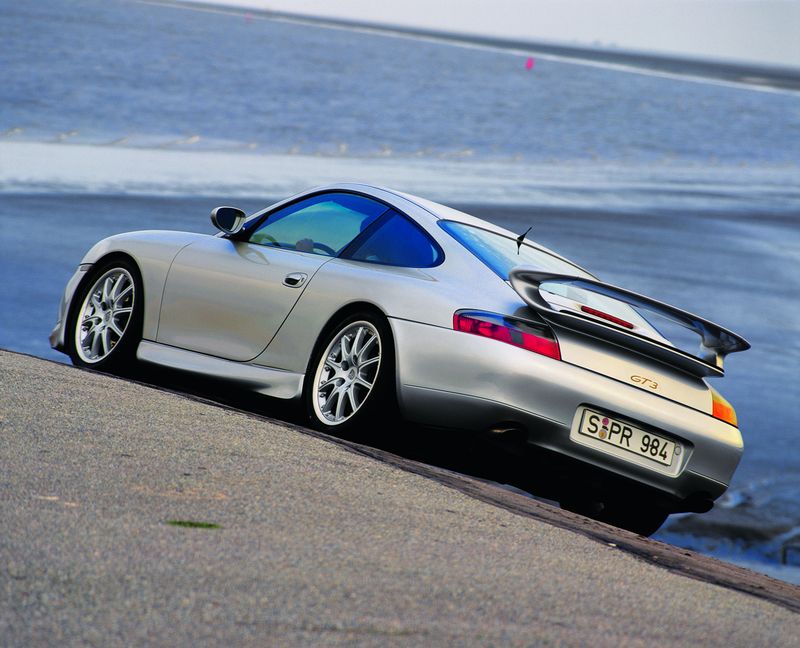
The new Porsche 911 GT3 accelerates to 100 km/h in a mere 4.8 seconds, then reaching the 200 km/h-mark in another 11 seconds. It subsequently continues progressing at this pace all the way to its top speed of 302 km/h or 187 mph. Proving its abilities on Nürburgring, the GT3 has already set up a new lap record for production cars, completing an entire lap on the northern circuit in just 7:56 minutes. Designed and built for very sporting, agile handling, this new Porsche sportscar literally hugs the road while ensuring a forgiving response and remaining easy to control even in extreme situations.
The 3.6-litre power unit is a further development of the six-cylinder horizontally-opposed boxer engine already featured in the 911 GT1, developing up to 370 Newton metres (273 lb-ft) of torque transmitted to the rear wheels via a six-speed manual gearbox. Maximum output at 7200 rpm is 265 kW or 360 bhp.
The brake system has been appropriately enhanced on all four wheels featuring reinforced four-piston monobloc fixed callipers with compensation of uneven wear and perforated, inner-vented brake discs increased in diameter to 330 mm or 13.00“. As a result, the GT3 offers even better deceleration and stopping power than the 911 Turbo (993).
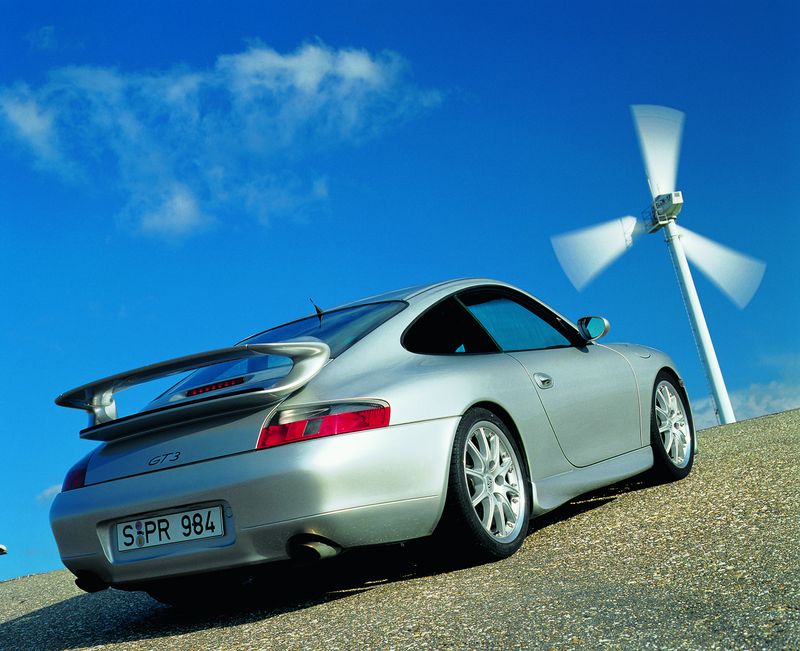
A new lap record at Nürburgring. The first production car to lap the northern circuit in less than 8 minutes. To be precise, the new Porsche 911 GT3 takes 7:56 minutes to complete this exercise, provided the driver is a real professional. This result alone impressively and objectively confirms the great success of Porsche's development engineers creating a new top-of-the-range athlete in Weissach with unparalleled performance of the highest standard. A car which also offers superior agility and handling in connection with a high standard of active safety.
The visible modifications of the GT3 versus the 911 Carrera remain discreet and quite reserved. The most significant highlights are the new rear end, discreet side-sills, the rear wing fixed in position, red brake callipers and 18-inch light-alloy wheels in sports design. The front wheels come as standard with 225/40 ZR 18 tyres, the tyre dimensions at the rear are 285/30 ZR 18. Getting its power to the road through this superior drive technology, the 911 GT3 accelerates to 100 km/h in just 4.8 seconds and reaches 200 km/h in 15.8 seconds. Acceleration in fifth gear from 80 – 120 km/h, in turn, takes 6.7 seconds, and the car's top speed is 302 km/h or 187 mph.
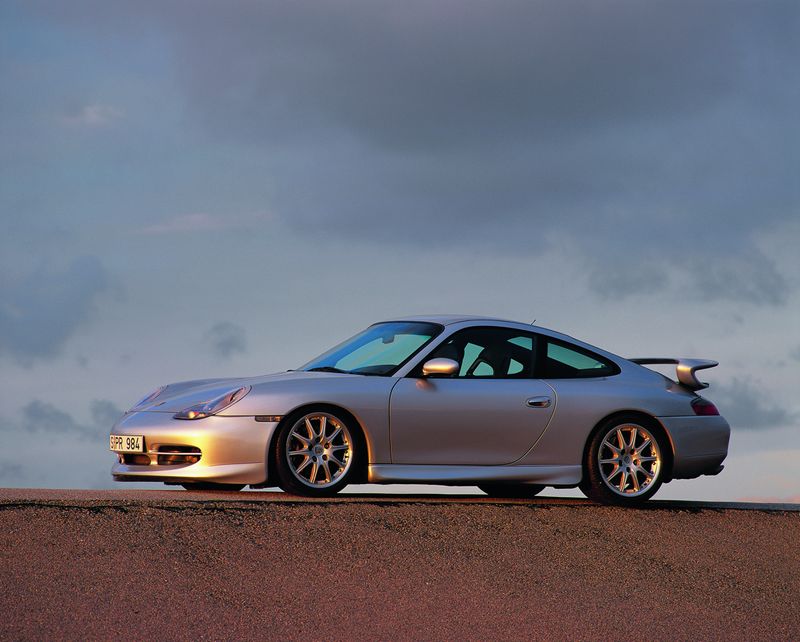
Developing maximum output of 265 kW (360 bhp) at 7200 rpm and maximum torque of 370 Newton metres or 273 lb-ft at 5000 rpm, the 3.6-litre power unit excels through its compact dimensions, superior smoothness, out-standing power reserves, „beefy“ torque curve and quick, fast-revving response. A further significant factor is the reduction in fuel consumption versus the previous Carrera RS: Achieving a composite consumption figure of 12.9 litres/100 km or 21.9 mpg Imp according to the EU standard, the GT3 requires 0.9 litres less fuel for each 100 km than its predecessor.
The „heart“ of the GT3, of course, is the power unit based on the water-cooled flat-six already featured in the Le Mans-winning 911 GT1. Clearly, technologies that have already proven their qualities under the toughest racing conditions guarantee supreme reliability also in a production sportscar. Typical examples are the special surface treatment of the crankshaft and the use of high-quality materials such as titanium on the connecting rods. The rods connecting the pistons and the crankshaft are indeed made in a particularly elaborate process ensuring optimum strength even at very high engine speeds (the engine of the GT3 revs up to 7600 rpm) plus the speed reserves required on a racing engine (up to approximately 9000 rpm).
Power is transmitted on the 911 GT3 by a six-speed manual gearbox developed from the racing transmission already featured in the 911 GT2. All six transmission ratios on this gearbox reserved exclusively to the GT3 have been carefully matched to the speed and performance of both the engine and the car itself.
To meet motorsport requirements, Porsche's engineers have given particular attention to the following points in designing and developing the transmission:
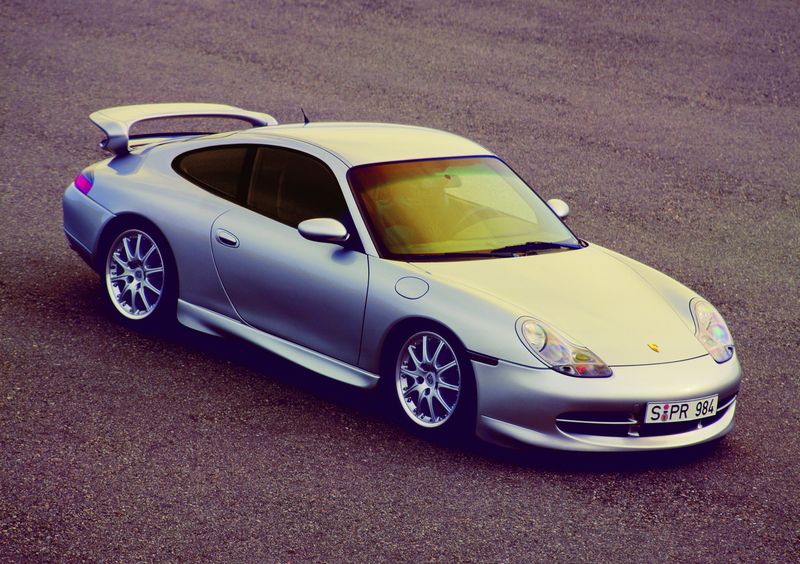
When it comes to the car's suspension, the GT3 once again impressively proves Porsche's experience in motorsport extended in this case up to the very limit of current sportscar technology. The entire suspension is designed and built for sporting performance, superior handling and equally outstanding driving safety. The suspension concept carried over from the 911 Carrera has been adjusted to meet the specific requirements of even greater performance and handling, also in motor racing. Apart from the general technical features on both the front and rear axle required for this purpose, this includes, inter alia:
While the brake system is by and large the same as in the 911 Carrera, it has been optimised in its dimensions and in some major design features. The ABS anti-lock brake system, in turn, remains unchanged.
Compared with the 911 Carrera, the four-piston aluminium fixed monobloc brake callipers front and rear are even larger and sturdier than before. Whenever required, they are thus able to hold the perforated, inner-vented brake discs firmly in position. Measuring 330 mm or 13.00“ (911 Carrera: 318 mm/12.52“) in diameter at the front and also 330 mm/13.00“ (911 Carrera: 299 mm/ 11.77“) at the rear, the brake discs are 34 mm or 1.34“ (911 Carrera: 28 mm/1.10“) wide on the front wheels and measure 28 mm/1.10“ (911 Carrera: 24 mm/0.94“) in width on the rear wheels. As a result, the GT3 offers even more stopping power and shorter stopping distances than the 911 Turbo (993).
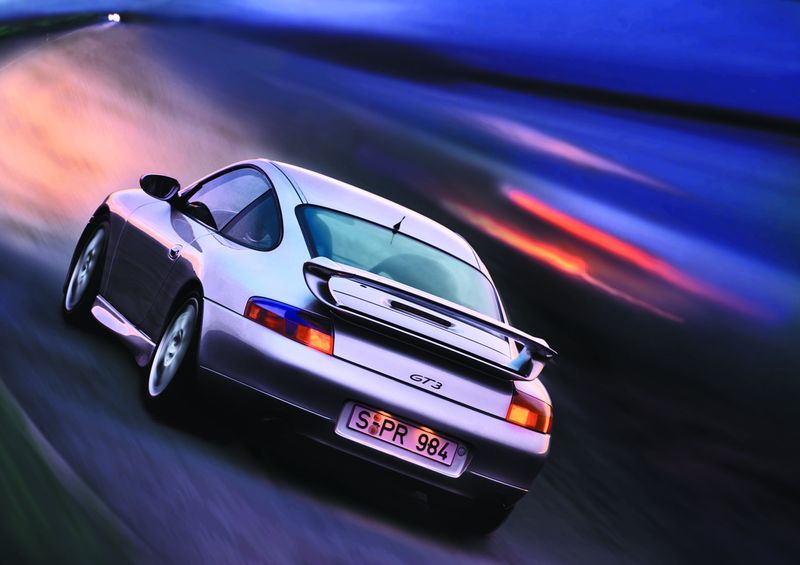
Leather-covered bucket seats made of reinforced plastic replace the usual 911 seats in the GT3, guaranteeing not only optimum side support, but also excellent comfort both on long distances and when entering/leaving the car. An advantage really important with a sportscar of this calibre is that the new seats save approximately 20 kg in weight. Similar weight-reduction measures are also to be found behind these extra-light bucket seats, the entire rear-seat section having been dropped to reduce the overall weight of the car by another 8 kg.
The new 911 GT3 is also available in special Clubsport guise, a version developed in particular for the aspiring racing enthusiast wishing to participate in motorsport without being obliged to make any special modifications requiring official approval. The most prominent feature in this case is the roll cage bolted directly on to the body of the car and now, unlike the configuration on the earlier 911 Carrera RS models, integrating the spring strut supports on the rear axle in the interest of enhanced stability. As a result, forces from the suspension are transmitted not only into the body of the car, but also directly into the roll cage. Under tough racing conditions this means that forces generated in the area of the rear spring struts cause only minimum deformation of the car's body.
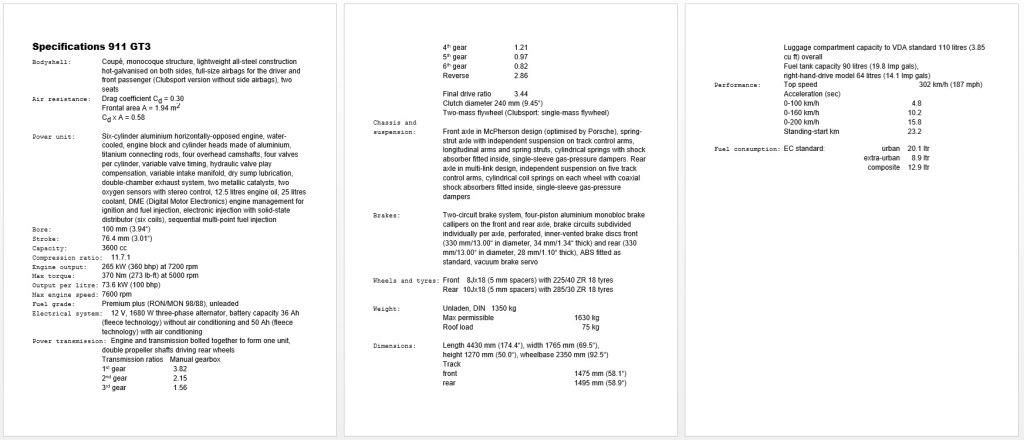
.jpg)
1995 - 911 RS
.jpg)
2000 - 911 GT3
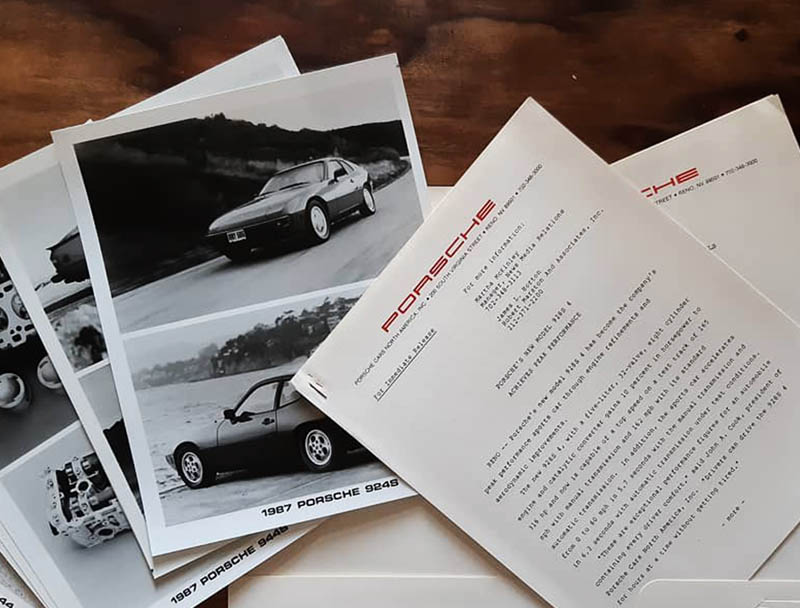
Porsche Press kit
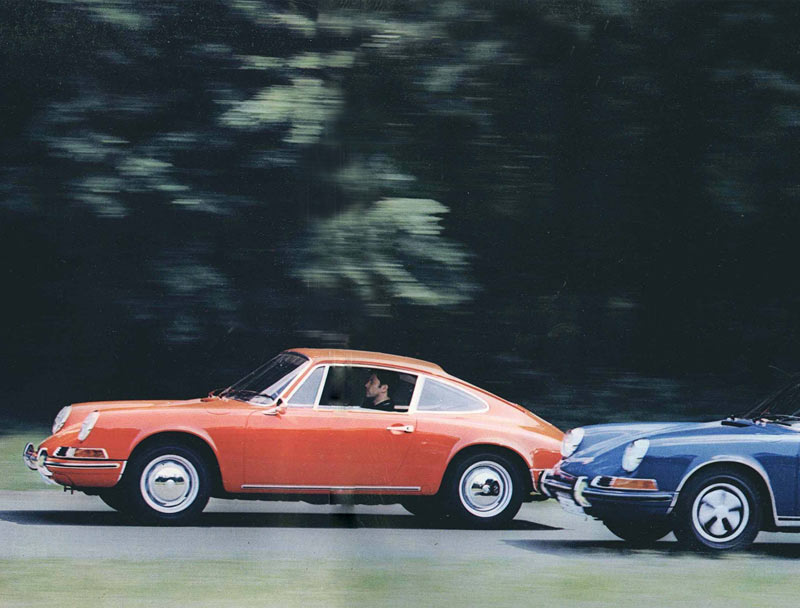
Porsche Literature
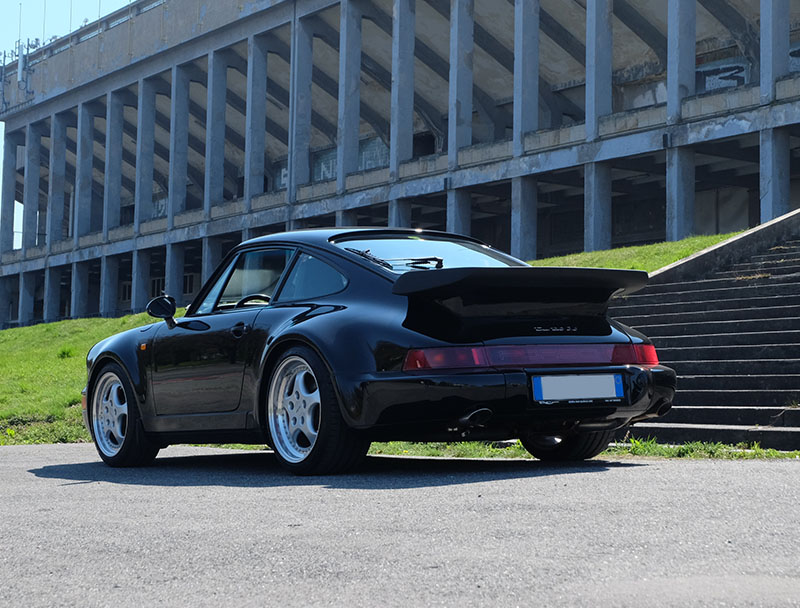
Our Porsche Cars